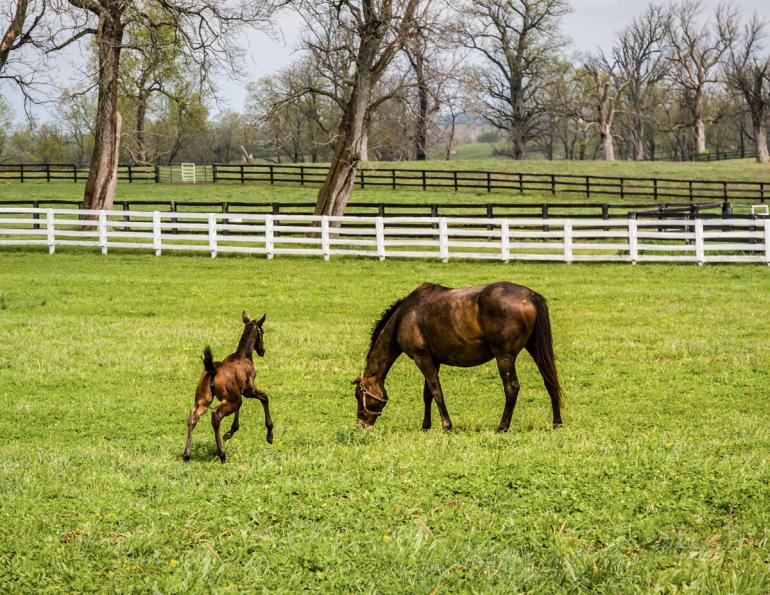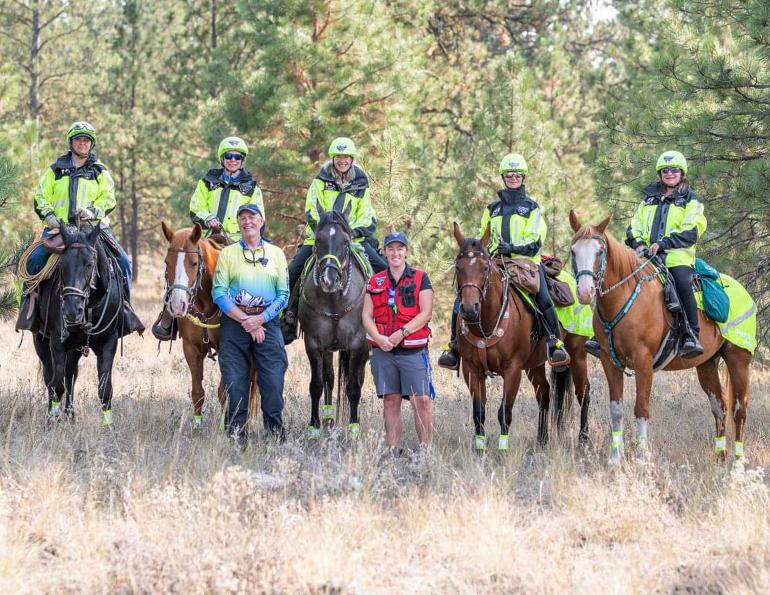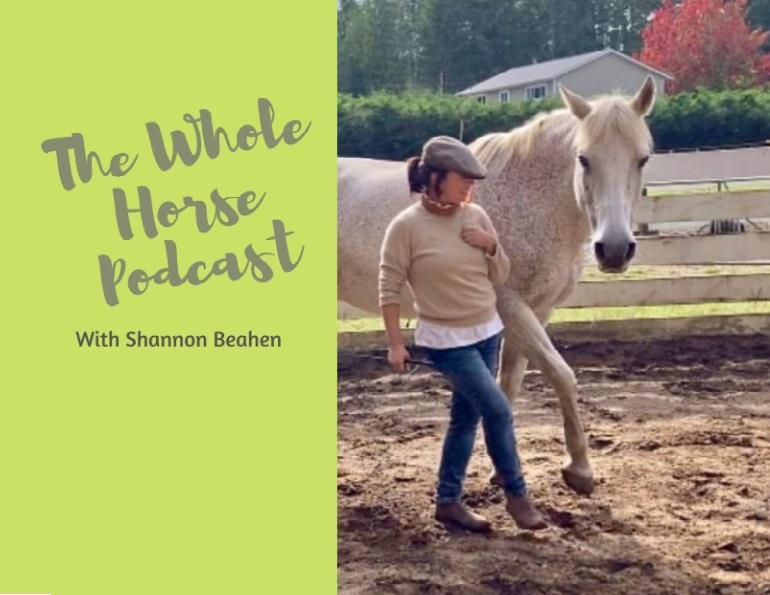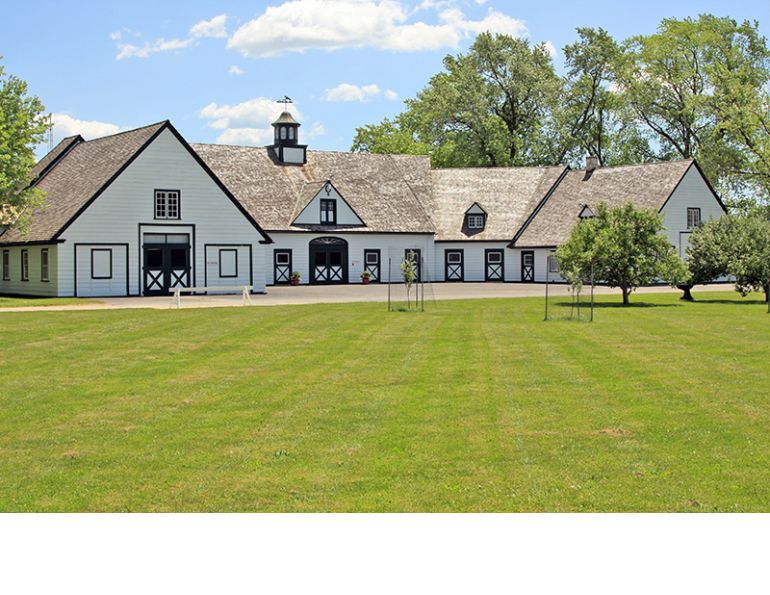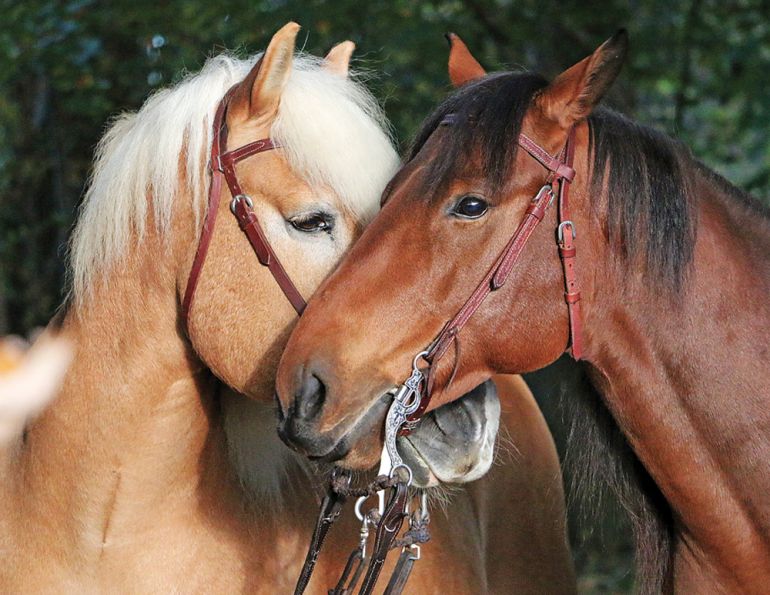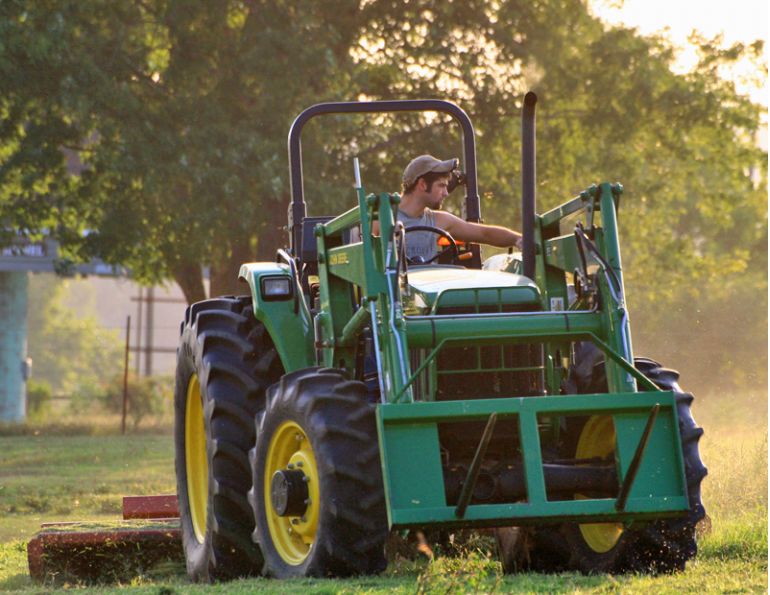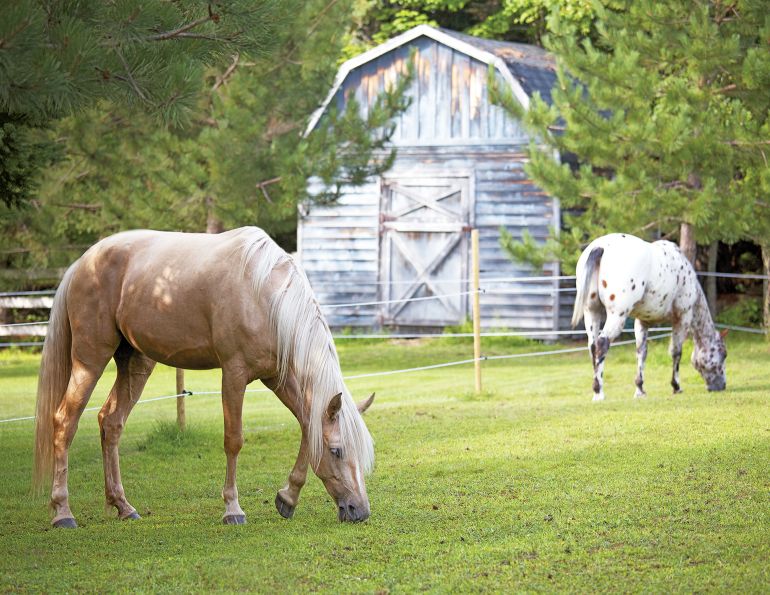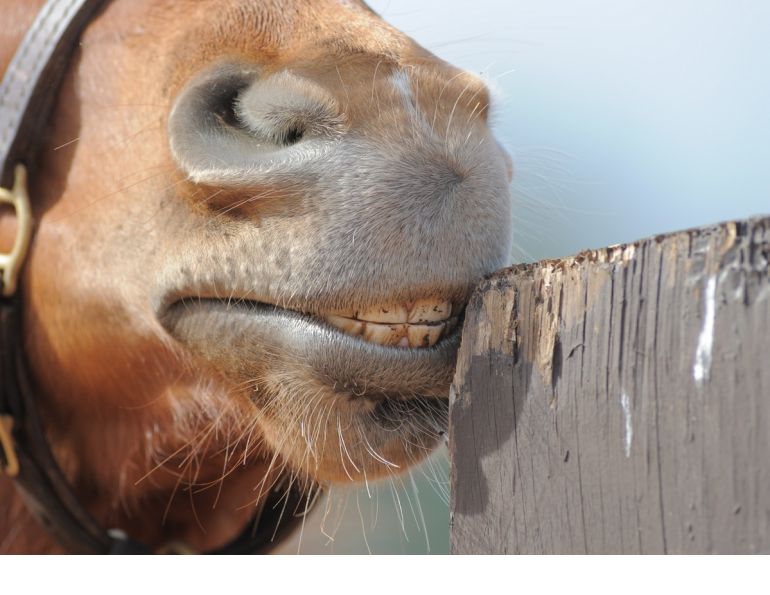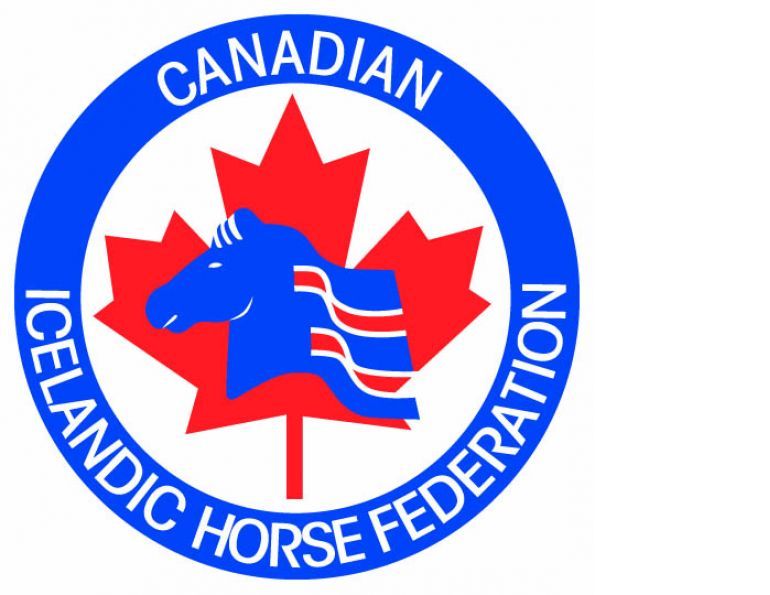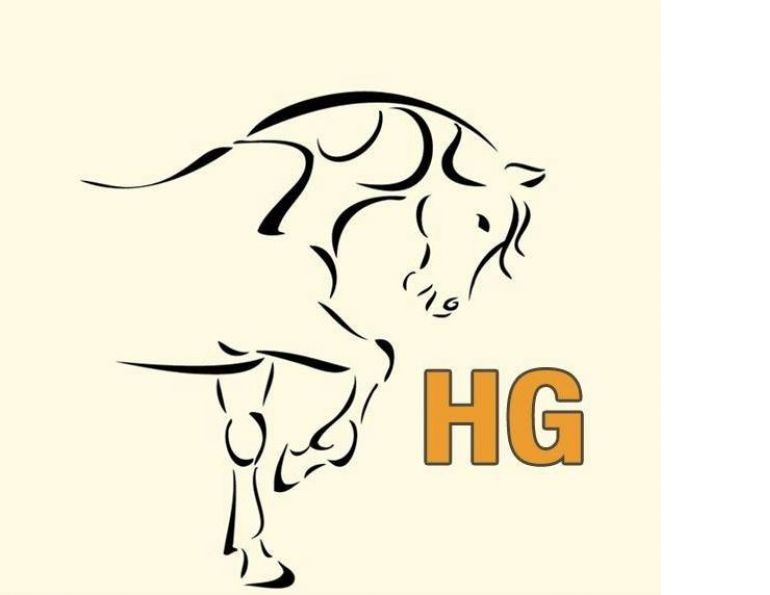By Melanie Huggett
Fencing is an integral part of horsekeeping. Fences are needed to keep horses safe and secure, confine them to certain areas, and give them the opportunity to exercise, graze, and socialize. There are a wide variety of fencing types available, but only some of them are suitable for horses; what works for a cow, goat, or sheep, may be dangerous to a horse.
A safe horse fence is strong, highly visible, durable, and free of hazards. Ideally, a fence should appear as a solid barrier so the horse will be less likely to challenge it or run into it. If a horse does run into the fence, the fence should not cause injury.
Other considerations when choosing a fence are attractiveness and affordability. Fencing aesthetics is a largely personal decision, but you should never compromise on safety for increased good looks. Affordability includes the cost of initial materials, installation, and maintenance costs.
“The large cost of a properly built fence can cause some to lose sight of the fence’s primary function and choose the least expensive route,” says Karin Turnbull of System Fencing in Rockwood, Ontario. “While it doesn’t have to break the bank, doing it right the first time will be compensated later with increase safety and peace of mind, and will also decrease maintenance costs substantially.”

Wood is strong and safe, and has classic good looks. It is expensive to install and maintain, however, and horses may chew on it, so it’s advisable to add a string of electric to protect the fence. Photo: Robin Duncan Photography
Outlined below are a number of fencing options for horses, as well as some fencing types to avoid. Whatever fencing you choose, be sure it is properly installed and well maintained. “Any fence improperly installed can be a disaster for horses,” says John Ferris of Ferris Fencing.
Wood Rail
Wood is the most traditional fencing material and has long been a popular choice among horse owners. “It blends in well with the environment and gives a classy, rural look,” says Ferris. Typically constructed of three or four evenly spaced two-by-six-inch wood planks or four-inch round rails screwed or nailed between wood posts, wood fencing is attractive, highly visible, and safe provided it is properly installed and maintained.
With its attractiveness and strength, wood makes good perimeter fencing near roadways and highly trafficked areas; however, ensure boards are nailed to the inside of the fence posts so that horses cannot pop them off by leaning on them. Also remember that boards thinner than two inches, such as one by six planks, while less expensive, are weaker and more likely to break and warp over time.
Water-based paint and black asphalt or coal tar based paints are commonly used to protect wood fencing. “To preserve the wood and good looks, it will need painting or staining on a frequent basis. If not treated, painted, or stained, it will fade to grey and the sun and weather will cause it to break and splinter,” says Ferris.
Initial construction pricing is midrange, but “the maintenance can be high if you have animals directly on the fencing or in smaller paddock areas,” says Turnbull. Horses often chew and rub on wood fencing, damaging the fence. Boards damaged by weather, horses, or other means will need to be replaced.
Vinyl Post and Rail
A relatively new type of fencing, PVC vinyl post and rail fencing combines the good looks and visibility of traditional wood without many of wood’s drawbacks. “This is a very good looking fence (the colour is stunning) and is very low maintenance,” says Ferris. No painting or staining is needed, but it will need occasional washing, especially if located near trees, dusty roads, or paddocks.
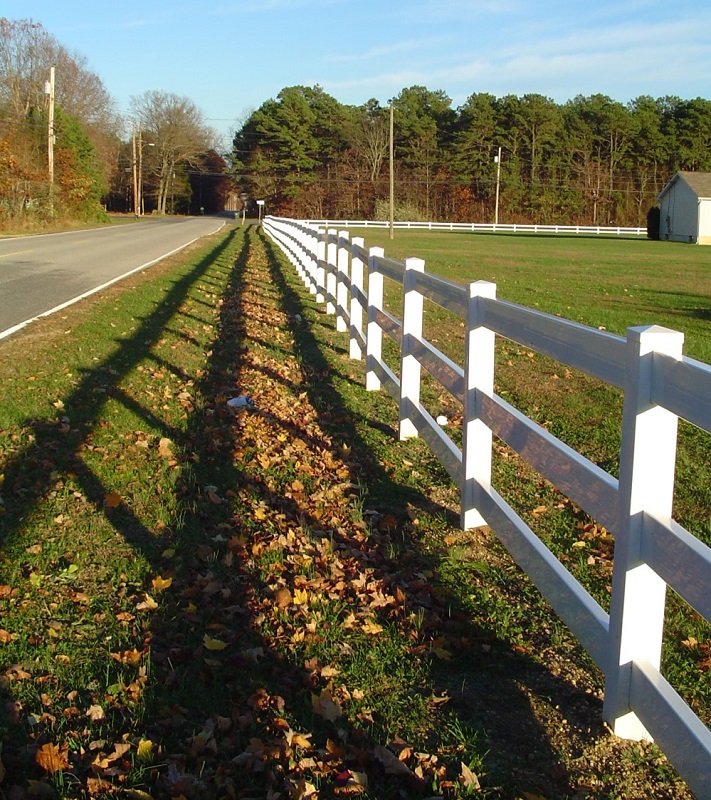
Vinyl post and rail is a very attractive fence that looks like wood but is less expensive to maintain and horses won’t chew on it.
“It can be damaged in extreme temperatures or if it receives a severe blow, such as a horse kick or a collision with a tractor,” says Ferris. However, vinyl rails do not splinter like wood when they break, and horses are very unlikely to chew on it.Vinyl post and rail is not as strong as wood. “Since it is a hollow post and hollow rail, if you are using it to contain livestock, it is highly recommended to put an electric line on it,” says Turnbull.
Vinyl post and rail is initially more expensive than wood, but long-term maintenance costs are practically nothing. According to Ferris, it also adds great real estate value and displays professionalism.
Tensioned Flexible Vinyl
In addition to hard PVC post and rail, vinyl fencing also comes in flexible polyethylene strips, which are tensioned between posts. These strips typically consist of a wire or multiple wires encased by vinyl to create one- to six- inch strips in white, brown, or black. “We consider this to be one of the safest fences on the market due to its ability to absorb impact and not warp,” says Ferris. “It is highly visible and very attractive when properly installed.” Like vinyl post and rail, vinyl strips are low maintenance, needing only to be washed and retightened occasionally.
“Flex fence is a low maintenance fence line and one of the most popular fencings in Canada because of its great price point, good looks, and strength over wood, and it does not need to be painted,” says Turnbull.
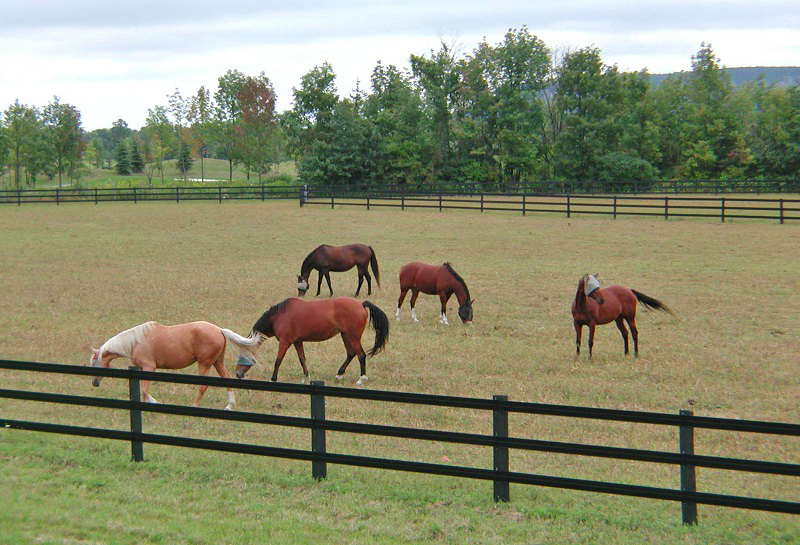
Flexible vinyl is one of the most popular fencing types in Canada due to its affordability, good looks, strength, low-maintenance, and safety. Photo courtesy of System Fencing
When it comes to installation, however, it is more difficult than wood or vinyl post and rail. A tensioned product, expertise along with the correct accessories, tensioners, buckles, and brackets are needed. Improperly installed or not maintained, flexible vinyl fencing will sag.
Vinyl Coated Wire
A final type of vinyl fencing is vinyl coated high tensile wire. Unlike plain wire, vinyl coated wire is visible to horses due to its white colour. It’s also much safer than plain wire. “It has the strength of high tensile but is safely coated,” says Turnbull.
“It is economical and easy to install, very clean looking, and does not clutter the landscape or views,” says Ferris. It needs practically no maintenance other than occasional retightening and is easy to use in combination with other products.
Electric
Increasingly popular, electric fencing provides a psychological barrier, giving horses an electric shock when they touch it. It comes in both braided wire and tape forms, in various widths. “It is a safe and economical way of constructing permanent and temporary fences,” says Ab Gorrill of Lamb Acres Electric Fencing in Bulyea, Saskatchewan.
“Electric is undoubtedly the most important form of fencing in the industry today,” says Ferris. “It is an essential tool for not only making fences safer for horses, but also protects the fence from the horse.” Used in combination with other fencing types, it can protect horses from chewing on, cribbing, or rubbing against rails and posts, keep them from squabbling with neighbouring horses, and protect items on the other side of the fence. Used alone, electric fencing is ideal for dividing areas for rotational grazing or to create additional paddocks; it should not be used on its own for perimeter fencing, however. In addition to providing a barrier for horses, electric fencing also deters wildlife, keeping them out of pastures and crops.
Some expertise is needed when choosing and installing an electric fence to ensure the proper controller and fencing materials are used, and that the controller, fencing, and ground rods are installed correctly. As a tensioned product, the installer must ensure that proper tensioning devices are used. Once installed, there is little maintenance to be done, but its performance should be monitored routinely with a fence tester to ensure that the fence is working correctly. Electric fencing can also be used with a solar powered or battery controller for those needing portable fencing, such as trail riders and those trailering to events.
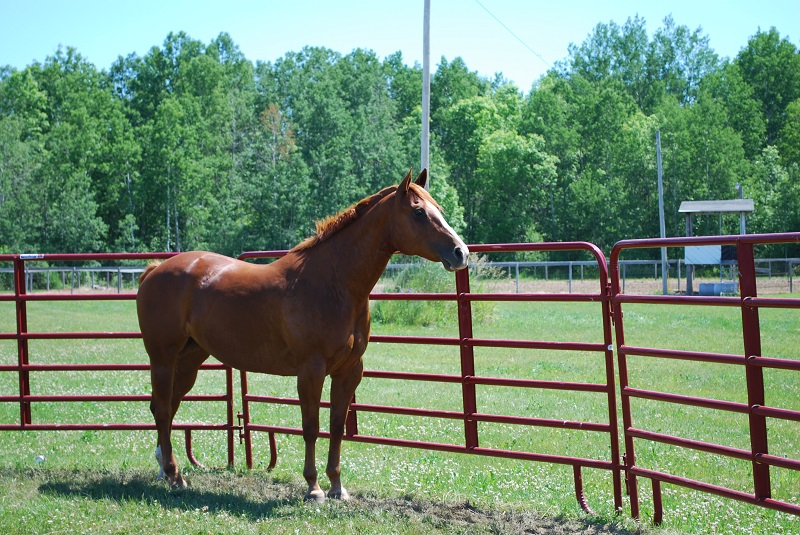
Steel portable panels are very useful for those needing flexible fencing and for roundpens. Make sure to choose a well manufactured panel made with Canadian steel.
Steel
Galvanized steel tubing is often used for gates, but can also be used for the entire fence. Steel fencing is strong, visible, and durable, and can be permanent or come in separate panels for portability. “In the form of panels, it is a great option for portable fence and round pens,” says Ferris. “For permanent fencing, it is expensive.”
Steel pipe fencing and panels can vary in quality, so make sure you buy from a reliable business, advises Janet Reid of JK Reid Manufacturing and Sales Ltd. “If pipe is from second hand sources and not properly galvanized and powder coated, it will quickly rust and need maintenance,” says Ferris. Reid suggests choosing panels made of lightweight, high tensile, Canadian steel, which is a stronger product that will last a long time and will not rust. High quality steel fencing requires little maintenance.
A durable product, steel fencing won’t break. Due to this unforgiving nature, “it can be hazardous to horses if a horse’s head goes through and the horse gets itself into a bit of a mess trying to get it out,” says Ferris. On the other hand, unlike other types of fencing, “there are no sharp edges to cut or catch the horse’s legs, reducing cuts and bruising if legs are caught,” says Reid. “Always remember the safety of the horse and pony. Welded uprights on panels will stop injury from sharp edges on cross or upright bars.”
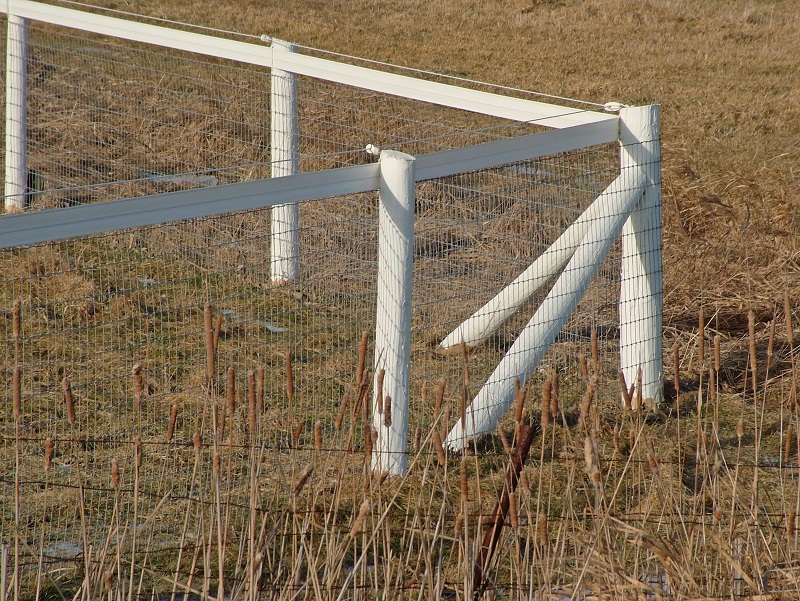
No-climb wire is not only good for keeping horses secure, but also keeps out small predators, dogs, and other pests. Photo courtesy of System Fencing
Wire Mesh
There are two types of wire mesh suited for use with horses: no-climb and v-mesh. No-climb is made of steel wire knotted together into two-by-four-inch openings and is also available with a black bezinal coating. “No-climb wire is rigid yet flexible to prevent injury and low maintenance,” says Turnbull.
V-mesh uses two wires that are twisted together in a two-by-four inch diamond formation to create smaller openings than no-climb. “V-mesh wire is one of the most respected equine fences in the market,” says Turnbull. “It has linear strength and a springy texture to protect horses from injury.” V-mesh is typically more expensive than no-climb.
Both types are strong, durable, and very safe when installed correctly. Due to the small wire spacing, “this is a highly recommended property perimeter fence as it is not only very secure for keeping horses and other livestock inside the property, but it keeps out small predators, unwanted neighbourhood dogs, and other unwelcome visitors,” says Ferris. He suggests choosing the best class three galvanizing product for longevity.
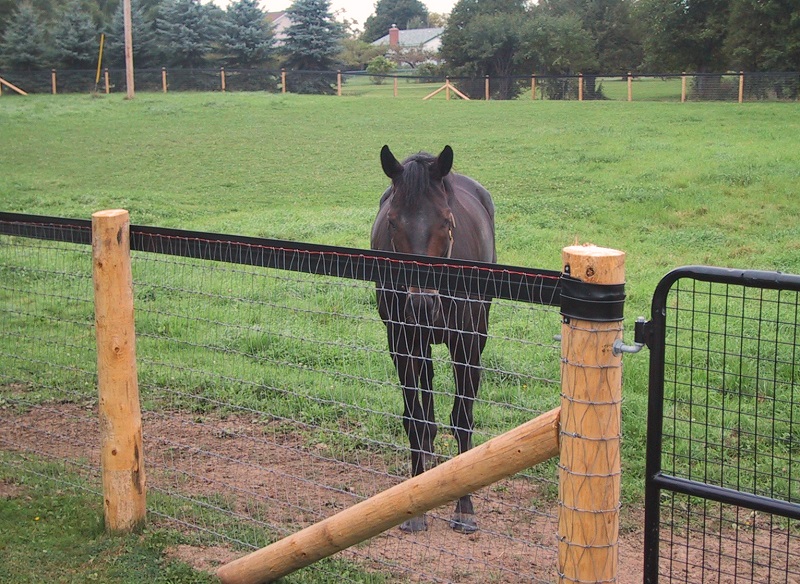
Diamond v-mesh with a top rail is attractive, long-lasting, and safe for horses. Photo courtesy of System Fencing
Expertise is needed to ensure both products are installed and tensioned correctly. Without a top rail, bracing will be needed at the corners, gateways, and beginnings and ends of runs.
Combination Fencing
Very often, a combination of fencing products provides the best option for horse owners. Electric can be added to any fencing. “The use and addition of electric fence to existing fences or alone is recommended to enhance safety for livestock and protect your investment in permanent fencing,” says Ferris.
“Whatever fence line you choose, an electric line is recommended to keep (horses) off,” says Turnbull. “This will not only increase the longevity of your fence line, but more importantly keep your horse at a safe distance.”
In addition to using multiple products on a single fence line, various types of fencing may be needed in different areas around the farm. A single farm may have wood and mesh perimeter fence, vinyl around paddocks and pastures, a steel round pen and quarantine paddocks, and electric fencing to divide pasture into sections for rotation. Determine what your needs are, the age and use of your horses, and the geography of your land to help you decide what will work best for you and your horses. If in doubt, contact a fencing contractor experienced in horse fencing who can guide you.
Fencing to Avoid
There are a number of fences that, while commonly used for other livestock, are dangerous to horses and should never be used as horse fencing.
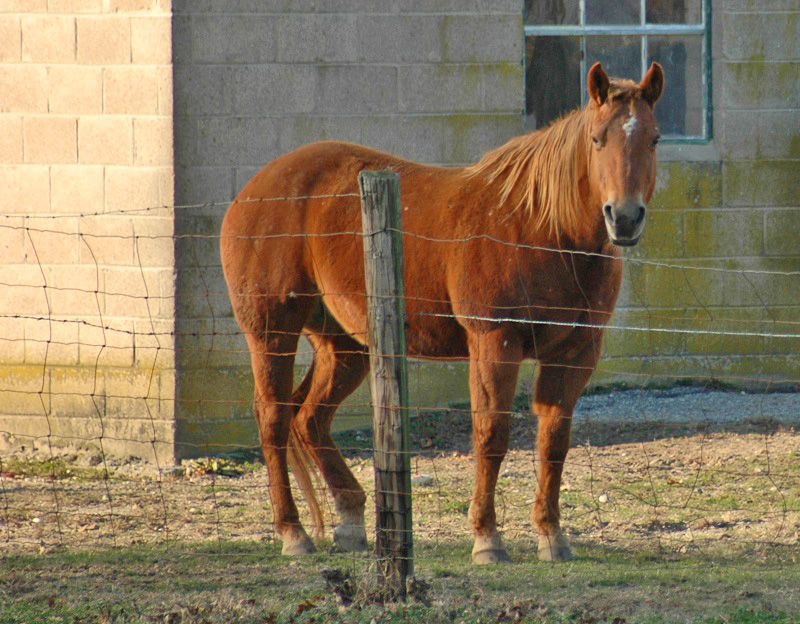
This horse is behind a dangerous fence made of loose, saggy page wire and barbed wire. Always replace any fencing unsuitable for horses with a safe type, as horses are more prone to fence injuries than other livestock.
Barbed wire is often seen in rural areas, especially around large tracts of land. Common cattle fencing, it makes extremely poor horse fencing due to its low visibility and high chance of causing catastrophic and often life-threatening injury. “It cuts and tears flesh,” says Ferris. “Barbed wire is number one for cuts and injuries.”
Another unsuitable horse fencing is plain high tensile steel wire, which is similar to barbed wire but without the sharp barbs. High tensile steel wire “can cut like a cheese cutter,” says Ferris. “Wire is not very visible and can cause major injury if a horse is caught up in it,” says Turnbull.
Finally, avoid page wire mesh. Its large holes are the perfect trap for a horse’s hoof.
The prevalent idea that horses will avoid poor fencing if they have enough land to wander is quite simply false. A horse is a flight animal and is thus more prone to injury on fencing than other livestock. A spooked horse or one being chased by a herdmate can run blindly into fencing trying to escape. And remember, “The grass is always greener on the other side!”
Always choose a safe horse fence, maintain it well, and replace any unsafe fencing with a safer option. Proper fencing will keep your horse safe, happy, and healthy, and save you money, stress, and heartbreak by preventing escape, injury, and even death.
“There is no perfect, 100 percent safe fence, but there are options out there that offer a high degree of safety and good looks,” says Ferris.
This article originally appeared in the June 2011 issue of Canadian Horse Journal.



